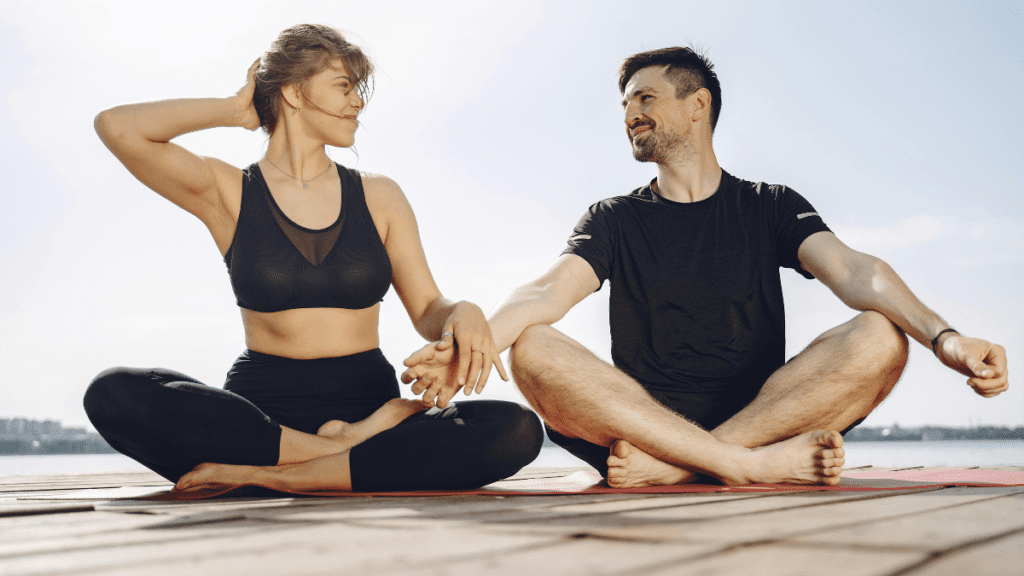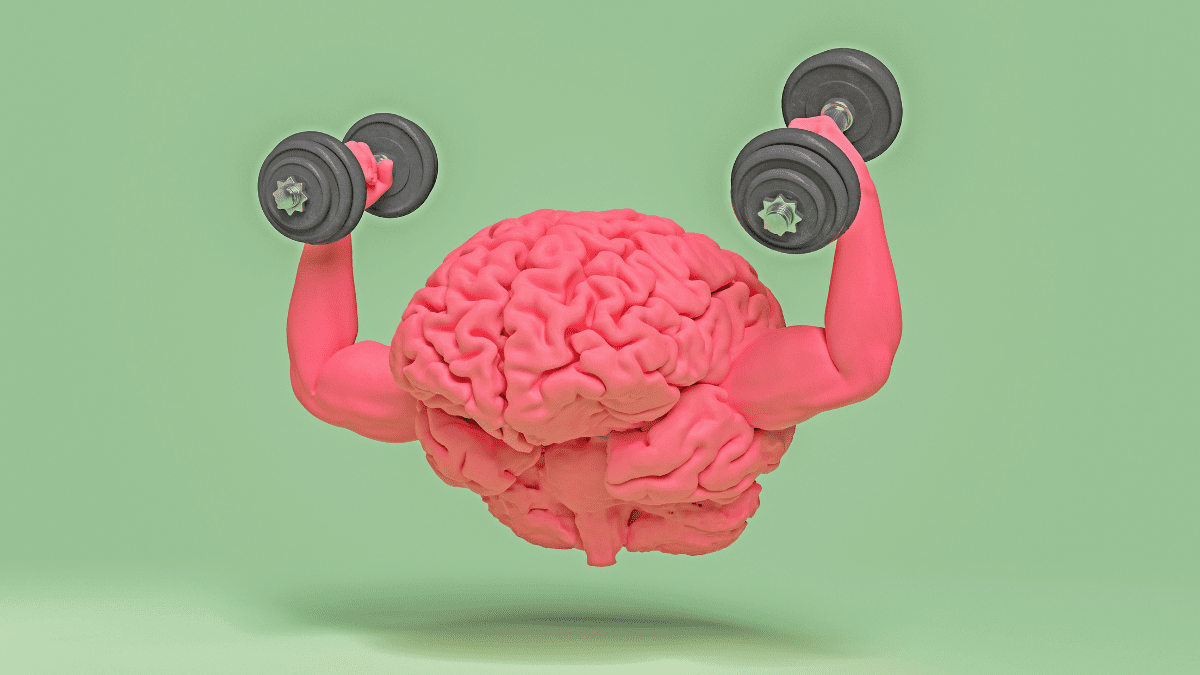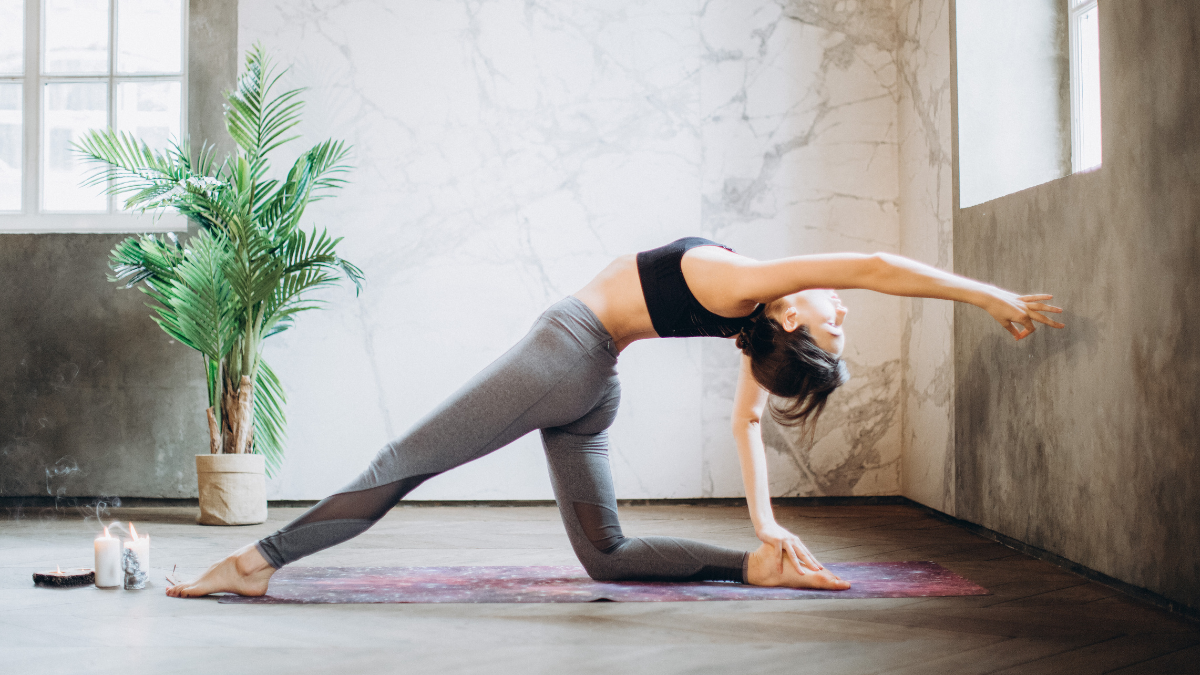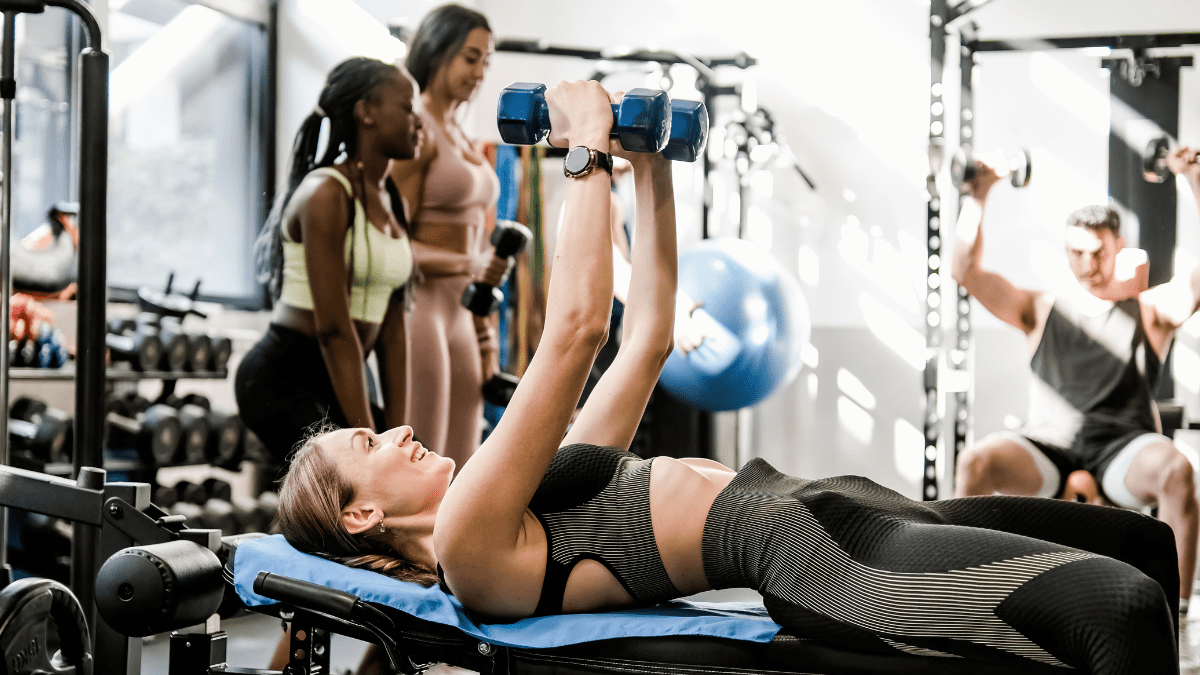The Power of Functional Fitness: Move Better, Live Stronger
Functional fitness helps you move better and live stronger by improving strength, flexibility, and balance. Discover simple exercises to enhance daily movement and overall well-being.

Have you ever struggled with simple daily tasks like lifting groceries, getting up from a chair, or bending down to tie your shoes? These everyday movements require strength, balance, and flexibility, yet many traditional workouts don’t prepare us for them. That’s where functional fitness comes in.
Functional fitness focuses on exercises that mimic real-life movements, helping you build strength in ways that improve your everyday life. Unlike isolated weightlifting routines, functional training strengthens multiple muscle groups simultaneously, making your body more efficient, stable, and resilient.
Beyond the physical benefits, functional fitness also nurtures mental well-being. By bringing mindfulness into movement, you enhance body awareness, reduce stress, and improve overall coordination. Whether you’re an athlete, a busy parent, or just looking to move with ease as you age, functional fitness is the key to living stronger, healthier, and pain-free.
Research shows that functional fitness improves mobility, strength, and injury prevention. According to Harvard Health, functional training enhances real-world movement patterns, helping you stay active and independent.
In this guide, we’ll explore the power of functional fitness, its benefits for your body and mind, and simple exercises you can start today to improve mobility, prevent injuries, and boost daily performance. Let’s dive in!
What Is Functional Fitness?
Functional fitness is more than just a workout routine—it’s a way of training your body to perform real-life movements with strength, stability, and efficiency. Unlike traditional gym exercises that isolate specific muscles (like bicep curls or leg presses), functional fitness focuses on movements that engage multiple muscle groups at once, mimicking everyday activities such as:
- Lifting – Carrying groceries, picking up kids, or moving furniture
- Squatting – Sitting down and standing up with ease
- Reaching & Bending – Picking up objects from the floor without strain
- Pushing & Pulling – Opening doors, pushing a stroller, or pulling a heavy bag
By strengthening your core, balance, and mobility, functional fitness helps prevent injuries, enhances flexibility, and makes daily life easier and more efficient.
How Is Functional Fitness Different from Traditional Workouts?
- Traditional workouts isolate individual muscles (e.g., bicep curls, leg presses).
- Functional training integrates multiple muscles and joints in each movement.
- Goal: Build strength that translates to real-life activities, not just gym performance.
Whether you’re an athlete, an office worker, or a retiree, functional fitness prepares your body for everyday demands, ensuring you move with power, ease, and confidence.
Why Functional Fitness Matters for Your Body and Mind
Functional fitness isn’t just about looking strong—it’s about feeling strong in daily life. By training your body with movements that mirror real-world activities, you build strength, flexibility, and endurance that directly impact how you move every day.
Physical Benefits of Functional Fitness
- Injury Prevention – Strengthens stabilizing muscles and improves posture, reducing strain on joints.
- Improved Mobility & Flexibility – Keeps muscles and joints limber for better range of motion.
- Better Balance & Coordination – Engages core stability, helping you move with control and confidence.
- Stronger Muscles for Daily Tasks – Makes lifting, bending, and reaching easier and pain-free.
- Increased Endurance – Helps with stamina so you don’t get tired from simple movements.
Mental Benefits of Functional Fitness
- Reduces Stress & Anxiety – Functional movements, paired with mindful breathing, help calm the nervous system.
- Boosts Focus & Concentration – Enhances mind-body awareness, improving coordination and reaction time.
- Encourages Mindfulness in Movement – Helps you stay present and feel more connected to your body.
- Improves Confidence & Mental Resilience – Strength gains translate into feeling more capable in everyday life.
By integrating functional training into your routine, you’ll move better, feel stronger, and enhance both physical and mental well-being—setting yourself up for a longer, healthier, and pain-free life.
Key Functional Fitness Exercises to Incorporate Daily
Functional fitness exercises are designed to strengthen your body in ways that make daily movements easier and safer. These exercises engage multiple muscle groups, improve coordination, and enhance flexibility. Below are some of the most effective functional exercises you can start incorporating into your routine.
1. Squats
- Strengthens the legs, glutes, and core.
- Mimics sitting down and standing up, improving mobility.
- Helps prevent knee and lower back pain.
How to do it:
- Stand with feet shoulder-width apart.
- Lower your hips as if sitting in a chair, keeping your chest lifted.
- Push through your heels to stand back up.
- Perform 10-15 reps.
2. Lunges
- Enhances balance and stability.
- Strengthens the legs, core, and glutes.
- Improves coordination for walking, climbing stairs, and carrying loads.
How to do it:
- Step forward with one leg, lowering your back knee toward the ground.
- Keep your front knee aligned with your ankle.
- Push back to the starting position and switch legs.
- Perform 10 reps per leg.
3. Planks
- Engages the core, shoulders, and back.
- Improves posture and spine stability.
- Reduces the risk of lower back pain.
How to do it:
- Get into a forearm or high plank position.
- Keep your body in a straight line from head to heels.
- Engage your core and hold for 20-60 seconds.
4. Push-ups
- Strengthens the upper body, including the chest, shoulders, and arms.
- Improves functional pushing strength for daily activities.
- Engages the core, improving overall stability.
How to do it:
- Start in a high plank position.
- Lower your chest toward the ground while keeping elbows close to your body.
- Push back up to the starting position.
- Modify by doing knee push-ups if needed.
5. Deadlifts
- Strengthens the lower back, hamstrings, and glutes.
- Helps with posture and prevents lower back injuries.
- Builds strength for lifting and carrying objects safely.
How to do it:
- Stand with feet hip-width apart, holding a weight or kettlebell.
- Hinge at the hips while lowering the weight toward the floor.
- Keep your back straight and core engaged.
- Push through your heels to stand back up.
Incorporating These Exercises Into Your Routine
- Perform 2-3 sets of each exercise for a full-body workout.
- Modify based on fitness level, adjusting weight and repetitions.
- Focus on proper form to prevent injuries and maximize benefits.
Adding these exercises into your routine will improve your strength, mobility, and coordination, making everyday movements easier and more efficient.
How Functional Fitness Enhances Longevity and Everyday Life
Functional fitness isn’t just about improving workouts—it’s about improving the way you move, feel, and live every day. As we age, muscle strength, mobility, and balance naturally decline, making it harder to perform routine activities. Functional training helps counteract these changes by strengthening the muscles and movement patterns we use daily.
How Functional Fitness Supports Longevity
- Prevents falls and injuries – Stronger muscles and better balance reduce the risk of falls, a major concern as we age.
- Maintains independence – Staying active ensures you can perform daily tasks without assistance, from carrying groceries to bending down safely.
- Reduces joint pain and stiffness – Strengthening the muscles around joints provides better support, reducing strain and discomfort.
- Improves posture and flexibility – Keeps the spine and joints mobile, preventing stiffness and back pain.
- Enhances cardiovascular health – Many functional exercises, like squats and lunges, increase heart rate and improve endurance.
Everyday Life Benefits of Functional Training
- Carrying heavy objects feels easier – Whether lifting a child or bringing in groceries, stronger muscles make everyday tasks more manageable.
- Climbing stairs becomes effortless – Improved leg strength and endurance reduce fatigue when walking or climbing.
- Better posture at work – Core strength helps maintain a healthy sitting posture, preventing back pain from long hours at a desk.
- More energy throughout the day – Strength training boosts metabolism and increases stamina, leaving you feeling more active.
By incorporating functional fitness into your routine, you’ll move with more ease, stay active longer, and enjoy a better quality of life. It’s not just about working out—it’s about training for a stronger, healthier future.

Functional Fitness vs. Traditional Workouts: What’s the Difference?
Many people associate fitness with lifting weights at the gym or running on a treadmill. While these exercises have benefits, they don’t always translate to real-life movement. Functional fitness, on the other hand, is designed to improve how you move in daily activities, making your workouts more practical and effective.
Key Differences Between Functional Fitness and Traditional Workouts
| Feature | Functional Fitness | Traditional Workouts |
|---|---|---|
| Goal | Improves daily movement, balance, and coordination | Focuses on muscle size, strength, or endurance |
| Exercise Type | Multi-joint, full-body movements (e.g., squats, lunges, deadlifts) | Isolated muscle exercises (e.g., bicep curls, leg extensions) |
| Muscle Engagement | Works multiple muscles at once | Focuses on one muscle group per exercise |
| Equipment | Uses body weight, kettlebells, resistance bands, and medicine balls | Often relies on machines and heavy weights |
| Real-Life Benefits | Enhances posture, flexibility, and injury prevention | Primarily improves appearance and gym-based strength |
Why Functional Fitness Is More Practical
- Engages the whole body – Rather than working muscles in isolation, it strengthens multiple groups at once, just like in real-life movement.
- Builds strength that translates beyond the gym – Instead of just lifting weights, you learn to move better in daily tasks.
- Reduces injury risk – Since exercises train stabilizing muscles and joint mobility, they help prevent pain and stiffness over time.
Traditional strength training can still be valuable, especially for muscle growth. However, combining it with functional fitness ensures a well-rounded approach, keeping you strong and mobile both inside and outside the gym.
Getting Started with Functional Training
If you’re new to functional fitness, starting with the right approach will help you build strength safely and effectively. Whether you prefer working out at home or in a gym, functional exercises can be easily adapted to your fitness level and goals.
Step 1: Focus on Bodyweight Movements First
Before adding resistance, start with basic movements to develop strength, balance, and mobility. Some beginner-friendly exercises include:
- Squats – Strengthens legs and core.
- Lunges – Improves balance and stability.
- Planks – Builds core strength and posture.
- Push-ups – Strengthens upper body and core.
- Glute Bridges – Activates the lower back and hips.
Step 2: Incorporate Functional Equipment (Optional)
Once comfortable with bodyweight exercises, you can enhance your training with:
- Resistance bands – Great for strength training with minimal impact.
- Kettlebells – Improves power and grip strength.
- Medicine balls – Adds dynamic movement for core engagement.
- Balance trainers (e.g., Bosu ball) – Helps improve coordination and stability.
Step 3: Train in Movement Patterns, Not Just Repetitions
Instead of just counting reps, focus on quality movement and proper form. Functional fitness is about control and awareness, not just speed or volume.
- Perform exercises slowly and with intention.
- Engage your core during every movement to protect your spine.
- Breathe properly—inhale during preparation, exhale during exertion.
Step 4: Create a Simple Functional Training Routine
Here’s a beginner-friendly workout to start with:
- Bodyweight Squats – 3 sets of 10 reps
- Lunges – 3 sets of 10 reps per leg
- Plank Hold – 30 seconds, repeat 3 times
- Push-ups (or knee push-ups) – 3 sets of 8-12 reps
- Glute Bridges – 3 sets of 12 reps
Tip: Perform this routine 2-3 times per week, gradually increasing intensity as your strength improves.
Step 5: Stay Consistent and Listen to Your Body
- Start with 2-3 functional workouts per week.
- Focus on progress, not perfection—small improvements lead to big changes.
- Allow for proper rest and recovery to prevent injury.
Functional fitness is about moving with strength, stability, and confidence. By integrating these exercises into your routine, you’ll build a foundation for lifelong mobility and well-being.
The Role of Mindfulness in Functional Fitness
Mindful movement isn’t just about exercise—it’s about being fully present during each movement. Practicing mindfulness while training can enhance coordination, reduce stress, and improve overall body awareness. If you want to develop a deeper sense of mindfulness beyond fitness, explore our guide on Mindfulness Practices to Enhance Your Life for techniques to stay present in your daily routine.
Why Mindfulness Matters in Functional Training
- Improves movement quality – Being present during exercise helps refine technique and prevent injury.
- Enhances mind-muscle connection – Focusing on the muscle being worked improves strength and efficiency.
- Reduces stress and tension – Pairing movement with breathwork can help release physical and mental tension.
- Encourages better breathing patterns – Controlled breathing enhances endurance and stability.
- Increases enjoyment of exercise – Mindful movement fosters a deeper appreciation for the body’s abilities.
How to Bring Mindfulness into Functional Training
- Slow down movements – Instead of rushing, focus on control and form.
- Engage your breath – Inhale deeply before exertion, exhale as you push or lift.
- Scan your body – Notice where you feel tension and adjust posture or technique.
- Limit distractions – Turn off notifications, focus on how your body moves, and avoid mindless reps.
- Stay aware of progress – Recognize small improvements in strength, balance, or flexibility.
The Connection Between Functional Fitness and Mental Well-Being
Training your body through purposeful movement has direct mental health benefits. Functional workouts:
- Reduce stress and anxiety by shifting focus to the present moment.
- Improve mental clarity by requiring coordination and concentration.
- Boost self-confidence by building a strong, resilient body.
Mindful functional fitness is about moving with intention, strength, and awareness. By incorporating mindfulness into your workouts, you’ll experience a deeper connection to both your body and overall well-being.
Common Mistakes to Avoid in Functional Training
Functional fitness is highly effective, but poor technique and bad habits can reduce its benefits or lead to injury. Avoiding these common mistakes will ensure you get the most out of your workouts while keeping your body safe and strong.
1. Ignoring Proper Form
- Rushing through exercises without focusing on correct posture can cause strain.
- Solution: Move with control, keep your spine neutral, and engage your core during every exercise.
2. Overtraining Without Rest
- Training too often without recovery can lead to fatigue and injuries.
- Solution: Allow at least one rest day between intense functional workouts.
3. Using Too Much Weight Too Soon
- Lifting heavier than your body can handle compromises form and increases injury risk.
- Solution: Start with bodyweight exercises before adding resistance like kettlebells or dumbbells.
4. Skipping Mobility and Flexibility Work
- Stiff muscles and limited range of motion increase injury risk.
- Solution: Incorporate dynamic warm-ups and post-workout stretching to maintain flexibility.
5. Not Engaging the Core Properly
- Many functional movements rely on core stability, but neglecting core engagement weakens effectiveness.
- Solution: Before lifting or moving, tighten your core like bracing for a gentle punch.
6. Relying on Machines Instead of Natural Movements
- Machines isolate muscles, but they don’t mimic real-life functional patterns.
- Solution: Use free weights, resistance bands, and bodyweight movements for more dynamic, natural exercises.
7. Forgetting to Breathe Properly
- Holding your breath makes movements harder and raises blood pressure.
- Solution: Inhale before exertion, exhale as you push or lift to maximize efficiency.
By avoiding these common mistakes, you’ll ensure that your functional training is safe, effective, and sustainable. With the right approach, you’ll move better, feel stronger, and protect your body for the long term.
Conclusion
Functional fitness is more than just exercise—it’s about training your body for real-life movement, improving strength, balance, and flexibility in ways that directly impact your daily activities. Unlike traditional workouts that focus on isolated muscles, functional fitness engages multiple muscle groups, making you stronger, more coordinated, and less prone to injury.
By incorporating mindful movement, focusing on proper form, and avoiding common mistakes, you can unlock the full potential of functional fitness. Whether you’re lifting groceries, playing with your kids, or simply moving through life with ease, this type of training helps you move better and live stronger.
Ready to take the first step? Start with a simple routine, listen to your body, and stay consistent. Over time, you’ll feel the difference—not just in your workouts, but in every movement you make.
Frequently Asked Questions (FAQ)
1. Is functional fitness good for beginners?
Yes! Functional fitness is highly adaptable for all levels. Beginners can start with bodyweight movements before adding resistance, focusing on form and gradual progress.
2. How often should I do functional workouts?
For best results, aim for 2-4 sessions per week, depending on your fitness level. This allows your muscles to recover while still building strength, endurance, and mobility.
3. Can functional fitness replace traditional strength training?
It depends on your goals. Functional training builds real-life strength and mobility, while traditional strength training is great for muscle growth and power. A combination of both is often ideal.
4. What equipment is needed for functional training?
You can start with bodyweight exercises, but common equipment includes:
- Resistance bands
- Kettlebells
- Dumbbells
- Medicine balls
- Balance trainers
5. Does functional fitness help with weight loss?
Yes! Functional exercises engage multiple muscle groups, burn calories efficiently, and boost metabolism, making them great for weight management.
6. Is functional fitness only for athletes?
Not at all. Functional fitness benefits everyone, from beginners to athletes to older adults looking to maintain mobility, strength, and independence.
By incorporating functional movements into your routine, you’ll build a stronger, healthier body that moves with ease in everyday life.







